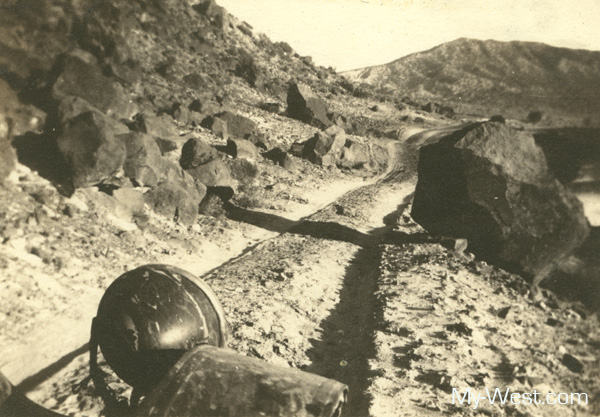By Donna Poulton
 Alyce Frank, El Salto, 2010, oil on canvas, 29 x 22 in. Credit: Fenix Gallery Alyce Frank didn't begin painting … until she and her family moved to an adobe morado built by the Penitentes in Arroyo Hondo, a small village outside of Taos, New Mexico. Transfixed by the beauty of the countryside near her home and inspired by the achievements of the German Expressionists and the Fauves, Frank, then 43, began painting New Mexican landscapes in the bold colors and expressionist style which have become her trademark. "Within 20 miles from my house, I can paint high mountain scenery, the snow line, the tree line where it is bare; I can paint the gorge of the Rio Grande, high desert and rock canyons. There are also orchards and farmland because of the irrigated valleys that the Spanish have developed. And then," she adds, "we have this beautiful light." --C.M., University of Chicago Magazine/October 1993
Alyce Frank, El Salto, 2010, oil on canvas, 29 x 22 in. Credit: Fenix Gallery Alyce Frank didn't begin painting … until she and her family moved to an adobe morado built by the Penitentes in Arroyo Hondo, a small village outside of Taos, New Mexico. Transfixed by the beauty of the countryside near her home and inspired by the achievements of the German Expressionists and the Fauves, Frank, then 43, began painting New Mexican landscapes in the bold colors and expressionist style which have become her trademark. "Within 20 miles from my house, I can paint high mountain scenery, the snow line, the tree line where it is bare; I can paint the gorge of the Rio Grande, high desert and rock canyons. There are also orchards and farmland because of the irrigated valleys that the Spanish have developed. And then," she adds, "we have this beautiful light." --C.M., University of Chicago Magazine/October 1993
 Alyce Frank, Grande Canyon Soft Colors, oil on linen, 30 x 30 in. Credit: Fenix Gallery
Alyce Frank, Grande Canyon Soft Colors, oil on linen, 30 x 30 in. Credit: Fenix Gallery
 Friday, May 4, 2012 at 11:31PM Tweet
Friday, May 4, 2012 at 11:31PM Tweet  © My-West.com Photography Collection. All rights reserved.
© My-West.com Photography Collection. All rights reserved. 1923,
1923,  New Mexico,
New Mexico,  dirt road,
dirt road,  headlight,
headlight,  rocks,
rocks,  rutted road,
rutted road,  sage brush | in
sage brush | in  Vernacular Photograph,
Vernacular Photograph,  Vintage Photograph
Vintage Photograph 







